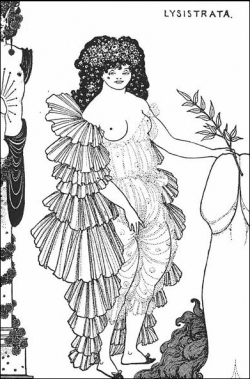Latina Artists and the Power of ” Cuchi, Cuchi!”
One of the things I used to detest so much as a child was watching the Spanish actress Charo shaking her ass and screaming out “cuchi, cuchi!” on stage. Her famous act would make my blood boil. Please, Charo, forgive me (for we are both Spanish, Latin women) but you’re capitalizing on broken English and the need to be sexy all the time, and I wonder if you helped shape the brand, image for Latin women.
There is more to my personal history with Charo’s legacy than growing up watching her on television: my paternal grandmother was a performer too and there was a crossing of paths between these influential Latin women. Seeing such a beautiful Latin woman depicted in Charo’s characteristic way was beyond me. I questioned this image constantly, wondering about the advantages of being famously sexy and vulnerable. As opposed to all the women in my family who were immigrants and championed higher education. They worked as professionals, speaking fluent English, and every single one of them was extraordinarily attractive.
On one hand, I saw Charo as a brilliant entrepreneur. She seized the opportunity to commoditize a stereotype and hence became a star with a net worth of twelve billion dollars. In a society where money is synonymous with power, that is a ton of power.

Sandra Eleta (Panamanian, b. 1942), “Edita (la del plumero), Panamá” (Edita [the one with the duster], Panama), 1977, from the series “La servidumbre (Servitude)” 1978-1979. Black and white photograph. 19 × 19 in. (48.3 × 48.3 cm). Courtesy of Galeria Arteconsult S.A., Panama. Artwork © the artist
Why is it that the Latin woman came to be depicted with such contrasting messages? Regardless of culture, is this not true of women in general? Artist Kara Walker presents this discussion in her work, Subtley, 2014 at the Domino Sugar Factory in New York. The giant foam sculpture covered in sugar greeted viewers on one side with juicy, kissable lips on her face, and on the other side, her vulva exposed, while wearing a headpiece associated with the stereotypical mammy in African-American culture. Walker successfully mirrored an image controversially in the middle of sexual fantasy and political incorrectness. It becomes slippery when a female uses the body as a form of rebellion: it all depends on which context it is being understood, and that is directly linked to the viewer. With recent sexual allegations against Hollywood mogul Harvey Weinstein, surfacing from many actresses (a diverse group of color and race), it is apparent that the female revolution has turned into a war between the sexes to protect our rights to our bodies and how we use it.
Meanwhile, Afro-Latina artists like Cardi B who use their body to get what they want as she confidently belts out in songs like “Bodak Yellow,” or “I Like it Like That.” Who’s not to say she is using her body as a weapon. Cardi B hit instant success on social media for candidly discussing her history as a stripper and hard life. In her video for “Bodak Yellow,” the artist raps about all her financial accomplishments due to stripping and goes on readily admitting to “using guys” and “feeling damn powerful.” The drawback I have with using the body so freely is: why give away the core to sex so easily? Isn’t this where the power is at?
In Lysistrata, a comedy written by Aristophanes in 400 BCE, the queen orders the women of the village to abstain from *sex with the men to force submission as an entrance to negotiate peace. Of course, the women groan and complain but fulfill the request and the plan worked. Later on, in 2013, Independent UK covered a story on Colombian women who refused to have *sex with their spouses and significant others until a hazardous 35-mile road was repaired. Both of these instances illustrate women using their bodies in rebellion, but this time they are adamant about withholding sex. We can ask ourselves if the platform to the truest female power is this simple. Is using our body as a performative vessel without sex the key to the ultimate power we seek? At least, just to get the message across of true empowerment.
Cardi B declares “He wanna swim with his face / I’m like okay, I’ll let him did what he want / He buys me, Yves Saint Laurent.” She goes on to say that she works hard. Well, many women work very hard and as mentioned in the instance of Radical Women: Latin American Art 1960-1980 whose roster of Latin female ( although it would have been great to include contemporary artists) exemplified women who went unnoticed while using their bodies stupendously in silent dissent. The ammunition in creativity was intellectually superior and their tactic to inject themselves into political protest through the arts was indeed “clever.”
All in all, the Latin woman is defined as a radical extremist as she focuses heavily on conversations dealing with the political dictatorship, misogyny, and abuse common in all Latin American and Latin Caribbean nations.

Sonia Gutierrez (born Colombia, 1947). Y con unos lazos me izaron (And they lifted me up with rope), 1979. Acrylic on canvas. Museo de Arte Moderno La Tuertulia, Cali, Colombia. © Sonia Gutierrez.
This discussion is not meant to compare the unfortunate historical events that have unfolded for the African-American or Latina woman. This is a conversation meant to highlight stereotypes that exist in the West about cultures considered “other.” To further elaborate, women in the West have received recognition in popular culture for shaking their asses, banking on looks, while those in fine arts who question dictatorships, abuse, inequality, the objectification of body and sexual assault are oftentimes operating under the radar of popular culture and/or ignored. Another work in Radical Women: Latin American Art 1960-1985 by artist Sonia Gutiérrez, And they lifted me up with rope, 1977, depicts a woman wearing a bright pink dress with rope wound up around her ankles as she suspends in mid-air. The image reveals bright, appealing colors against the nightmarish reality of the hunted on display like a trophy. It’s as though being a woman with a vagina is asking for trouble, more so, if the woman happens to be attractive, sexy and sensual.
On the contrary to the aforementioned, Gutiérrez’s subject is wearing a homely, frumpy garment. There is nothing sexy about the attire, so what caused the subject to fall victim to such a violent act of assault? It is apparent that anytime a woman, regardless of color, race or sexual preference decides to investigate topics (like Gutierrez did in her work which isn’t a favorable one or requires uncomfortable participation from the viewer, think men here, sorry fellas), they are ostracized, labeled as difficult and pushed out of society with the consequence of a harder life—in all aspects. Is it easier to view works that don’t confront this stigma because it is un-disturbing and easy to see a beautiful woman but not have to hear her?
I have often wondered if the stereotypes were created as a form of psychological warfare on members of society that those in power wanted to oppress. Which begs the question: why do women who play along with these stereotypes gain financial wealth and social recognition while the brash, intellectual woman is snubbed?
It is really difficult to persuade those unaffected by inequality or abuse to understand what the protesting is about. I invoke on Curator Cecelia Fajardo-Hill’s statement, “You can’t say it didn’t exist” when speaking about the female artists in Radical Women: Latin American Art, 1960- 1985. These women, among many other great Afro-American, Indian and non-Western artists have been lamenting the need for change, silently in their works for years and it has been falling on deaf ears. It is so painful knowing this truth. It is not a myth and it shan’t be disregarded.

Activists with Atitude: ● 2006, Colombia — Proclaiming a “strike of crossed legs,” women in Pereira withheld sex to stop gang wars and drive home the point that violence is not sexy. The ten-day strike may have worked. By 2010, Pereira’s murder rate declined by 26.5 percent.
As I sit back and watch the (gender) social earthquake take place, raising the stinking, hidden hell, sitting beneath us for centuries, I applaud female curators such as Cecelia Fajardo-Hill and Carmen Hermo (among others not mentioned) step into the exhibition arena. It is exhibitions like this, focusing on women, that will continue to address haunting issues women face and hopefully eliminate inequality: or maybe the exhibition space and the help of the curator will provide the support we need to capitalize on our intelligence and desire for social change.
Maybe the female raucous will bring in the proper respect we have been waiting for while making a hefty living too. Besides, men have figured out how to go to war and make money, and Charo banked on a stereotype and look at her today. I guess we can learn a thing or two about stereotypes.
by Beláxis Buil
Edited by Abel Folger
- Other Sex Strikes:
http://activistswithattitude.com/sex-strikes-and-birth-boycotts-no-laughing-matter/


